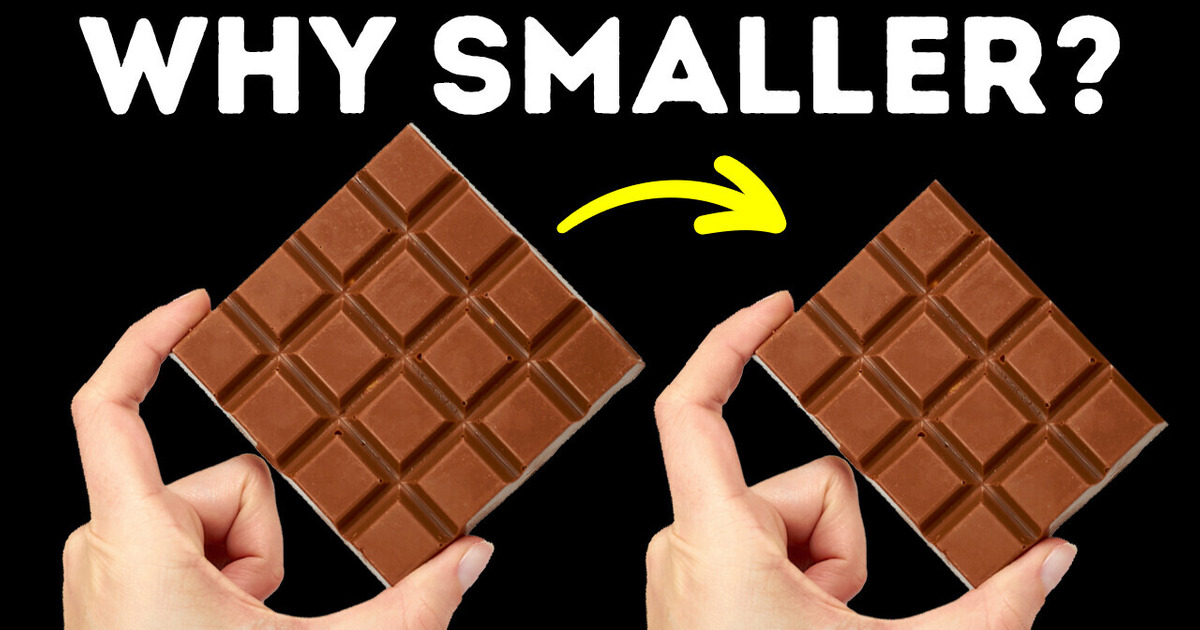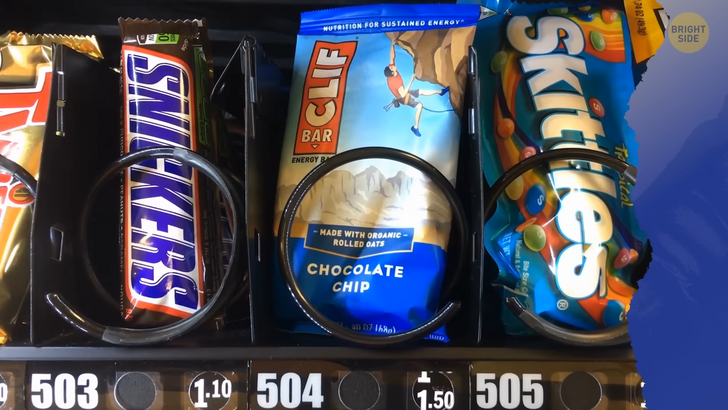21 Stories That Prove Blended Families Are Equal Part Struggle and Love


Are chocolate bars really getting smaller as time goes by, or is it just an optical illusion? The truth is, it has nothing to do with packaging or the way these snacks are molded these days. Chocolate bars are indeed getting smaller.
Some well-known brands have dropped off as much as 0.3 oz from their standard chocolate bar. When asked why, most companies tend to say it’s because of what consumers want. The answer is a bit more complicated than that.
First, we have to look at the global chocolate market. People really do love chocolate, and the global demand for the sugary treat becomes larger each year. These days, we’re talking about a whopping 18,000 tons of chocolate per day, which translates to over 40 million bars. But in order to have chocolate, you first need to harvest cocoa beans.

Ivory Coast and Ghana, located in Africa, are the primary suppliers of cocoa beans for the whole world. But recently, these areas have been severely affected by droughts, and the lack of rain has affected the cocoa crops. The price of sugar has also increased. And if you combine that with the fact that packaging is also getting more and more expensive, it’s easy to see why you’re paying more for the same bar each year.
Chocolate isn’t the only product affected by these changes. If you’re one of those people that enjoy having breakfast, I have some bad news. The price of cereal has also changed recently. Some studies have shown that up to 15 types of American cereals you can find in supermarkets were downsized between 2013 and 2016 — even though the price remained the same.
Well, it’s not all bad since a lot of cereal boxes contain plenty of unnecessary sugars, which can be bad for your diet. If the price of cereal isn’t something you want to be worried about anymore, you can always choose a different, healthier alternative for breakfast, like eggs, fruit, and vegetables. Both your wallet and your waistline will appreciate it.
Moving on to a different aisle, toilet paper seems to have shrunk too. Of course, you may not notice it at first glance; I mean, the roll does look the same, doesn’t it? But if you pay closer attention, you’ll see that you’re going through toilet paper faster than you used to. That’s because the roll isn’t as long as it used to be.

A study performed in 2016 noticed that the total number of sheets per toilet paper roll had gone down by about 14% in two years. But the producers hadn’t changed their prices either. A lot of companies these days have to adapt to high costs and supply chain issues. So, to avoid having to jack up their prices all of a sudden, a lot of companies tend to shrink their products. This behavior is called shrinkflation.
It’s when products get smaller — either in weight, size, or quantity — but their prices don’t. They either stay the same or even increase. You’re most likely to see these changes happen in products like snacks, pantry items, frozen foods, meat, bread, and pastries. And the sad news is, once a product has gone down in size, it’s really unlikely it will ever go back to its original design.
There are things you can do, though, to adapt to these changes. For starters, you can buy the same item from a different brand. Don’t be afraid to swap a name brand with a generic one. Most of the time, you’ll get more for the same amount of money. And the ingredient list on most products will be almost the same.
You can also opt for buying in bulk, especially non-perishable items, like canned food or household items. Lastly, there’s always the option of filing an official complaint to the brand in question. Sure, it might not stop the product from going down in size in the future, but in response, you might get some coupons for your next purchase.
Some other products have changed their size, too, but for completely different reasons. Take car engines, for instance. They’ve changed considerably in the last 100 years. In the 1930s, Ford V8’s engine weighed about 507 pounds while giving only 48 kilowatts of power. If we look at newer engines, we’ll see they’ve almost tripled the amount of power they can deliver while their weight has reduced by more than 50%.

The same goes for computers. If we go down history lane, we’ll meet the Atanasoff-Berry computer — or what is known as the world’s first digital computer. It was about the size of a desk, but it could only solve simple equations with additions and subtractions.
A few years later, we were introduced to a more general-purpose computer, but that one needed an entire room to fit in. These days, laptops can fit in almost any type of bag and have 100 times more processing power. Not to mention you can do almost anything on your laptop, from writing to video editing to chatting with your family on the other side of the globe.
Our clothes are getting smaller, too, but not because manufacturers are shrinking them. You may be an expert in washing clothes, but the chances are you’ve shrunk at least a sweater or two in the past. You may have washed it at the wrong temperature or dried it incorrectly.

But for most clothes, this shrinkage doesn’t happen instantly. Any kind of heat applied to any kind of fiber makes it shorter in time. So, by the time you’ve washed a T-shirt 10–15 times, it’s already smaller than when you first tried it on. Keeping your clothes in top shape for longer is about a delicate balance.
For starters, some types of garments need to be washed at higher temperatures to make sure you get rid of any unwanted smells or bacteria. Things like underwear or socks rarely get clean if you simply wash them in cold water. As for the rest of your wardrobe, to be on the safer side, stick to a cold-water cycle. Also, try to hang delicate garments to dry and avoid placing them in the drier after you’ve washed them.
Hate to break it to you, but our brains are getting smaller, too. Our gray matter does decrease as we age. But certain bad habits can speed it up. This process has been linked to such things as lack of sunlight or sleep, or insufficient amounts of some important nutrients and vitamins.
If we look at the bigger picture, we’ll also see dramatic changes in our minds and personalities. The past 6 million years have roughly tripled our brain size. You might think this trend will continue, but it probably won’t. Surprisingly, our brains are now getting smaller with each generation.

Research shows that the human brain size peaked about 20,000 years ago, just before the invention of farming. After that, our brain size started to decrease, and we’re not really sure why. One explanation is that fats and proteins were hard to find once we started farming. It made it more difficult to grow and maintain large brains. Our brains also cost us a lot of energy. They take up around 20% of our daily calories.
We aren’t the only ones affected by shrinkage. Some animals are also taking the hit. Sloths, for instance, used to be as tall as giraffes about 100,000 years ago. But that seemed to change when humans entered the picture. As the Homo Sapiens population grew larger, we needed more and more food. So our ancestors started hunting larger animals.
These days, temperatures continue to rise globally, which affects the animal kingdom. As temperatures go higher, some areas of the world get drier. There is less food. The water in our oceans tends to become more acidic, which affects some organisms’ ability to process calcium. With less calcium, skeletons are getting smaller and weaker. In fact, the average animal size has gone down by an estimated 50 to 75%.











